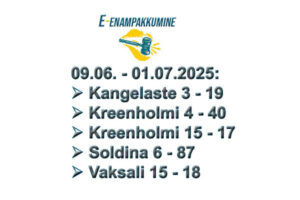Bulgaria is heavily exposed to US customs on steel and aluminum

The European Bank for Reconstruction and Development (EBRD) expressed concern about the effect of US duties on steel and aluminum on the Bulgarian economy.
An economic forecast published on Thursday, the bank, which has 65 countries, the EU and the ECB, says that « Bulgaria, Slovenia and Romania are most exposed to the recently announced increases in US duties on steel and aluminum » among the countries with which the bank works.
| « Considering the volumes of existing exports to the United States and the different elasticity of the demand for imports of individual products in view of the 25% tariff can lead to a reduction in GDP to 0.03% for Bulgaria. Slovenia and Romania, » the bank analysis said. |
Although much of the EBRD funding is aimed at businesses in the private sector, it actively supports financial institutions. The Bank operates with 40 economies from Central Europe to Central Asia, the Southern and Eastern Mediterranean region, the West Coast and the Gaza Strip.
The focus of EBRD investments in Bulgaria is in projects in the field of sustainable infrastructure, finance, industry, trade and agribusiness. Given the basic orientation of the EBRD to the private sector, its share prevails in its portfolio for Bulgaria
The forecast for Bulgaria
The EBRD corrected its forecast for the economic growth of Bulgaria by 0.5%in 2025, suggesting that during the year the Bulgarian economy would increase by 2.4%and in 2026 – by 2.8%. The estimated growth for 2024 is determined at 2.3%.
Trump effect
According to EBRD, the uncertainty about the additional duties announced by the US president will harm trade, investment and growth in all regions where the bank works
| « Increased uncertainty itself is sufficient to discourage investment, weaken production and violate global supply chains, » the analysis said. |
A scenario in which the United States raises duties over all imports by an additional 10%can reduce GDP in the EBRD regions by 0.1-0.2 percent in the short term. Jordan, Slovakia, Hungary and Lithuania are most vulnerable to such measures due to their overall commercial exposure to the US market. The export of the three European countries to the United States is between 3 and 6 percent of GDP in 2023 and provides them with 1-3% of GDP.
Economic analysis shows that if duties are selectively applied, economies with privileged access to the US market can benefit from redirecting trade and increasing foreign direct investment.
Delay inflation and leap of deficits
The EBRD points out that regional inflation has decreased, which offers some relief. Of the highest values registered in October 2022 – from 17.5% in the region serviced by the bank, it dropped to 5.9% in December 2024.
ECB fears: Weak growth in the euro area and uncertainty reinforced by the crisis in France
However, inflation remains more than 1 percentage point above its average before the pandemic, with price pressure increasingly moving by demand factors, such as slower fiscal policies and rapid wage growth.
| « Fiscal policy and wage dynamics are now playing a much larger role, and the path forward requires careful policy calibration to ensure a stable growth trajectory, » says Beata Yavorchik, Chief EBRD economist. |
Although the delay in inflation largely meets expectations, the report notes the fact that interest rates decrease more slowly than predictions.
At the same time, state deficits are increasing as a result of a combination of factors, including the revival of industrial policies against the background of the fragmentation of trade and investment, the fiscal burden of the aging population and the increasing defense costs.
Defense costs in the EBRD regions have almost doubled in the last decade, increasing from 1.8% of GDP in 2014 to 3.5% in 2023, with additional increases expected.
Regional growth forecasts
In southeastern countries EU growth slowed to 1.5% in 2024 due to poor external demand, investment delay and reduced fiscal incentives, the bank analysis said. Growth is expected to recover to 2.1% in 2025 and 2.4% in 2026.
Growth in Central Europe and the Baltic States is expected to reach 2.7% in 2025 and 2.8% in 2026, supported by sustainable labor markets. The forecast for this year has been revised down due to the slower than the expected recovery in Western Europe, which reduced production, exports and investment.
Growth in The Western Balkans is expected to remain stable at 3.6% in both 2025 and 2026. The revision down to this year's forecast reflects the lower external demand and smaller internal effects of public investment projects against the background of the narrow labor markets.
For the area of Eastern Europe and the Caucasus (former Soviet republics) A further growth delay is expected (up to 3.6%) due to the decline in brokerage and tributary of labor.
The Bank corrects down the forecast of Ukraine For 2025 by 1.2% due to the damage to the electricity infrastructure caused by Russia's attacks. GDP growth is planned to be an average of 3.5% in 2025 before rising to 5% in 2026, if the end of the year is terminated.
Growth in Turkey delayed to 2.9% in 2024, which dropped from 5.1% in the previous year, which reflects the tightening of monetary policy in order to reduce the constantly high inflation. Growth is expected to be 3% in 2025 and 3 € 5% in 2026 as inflation decreases and real salaries increase.








